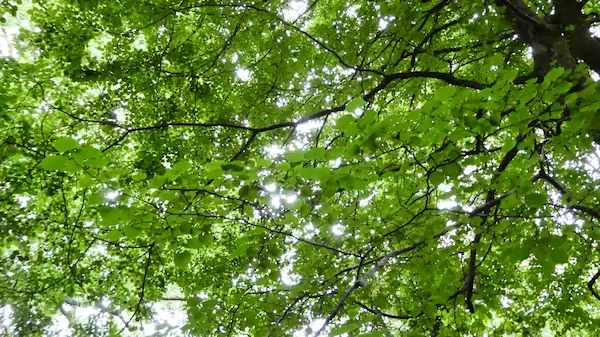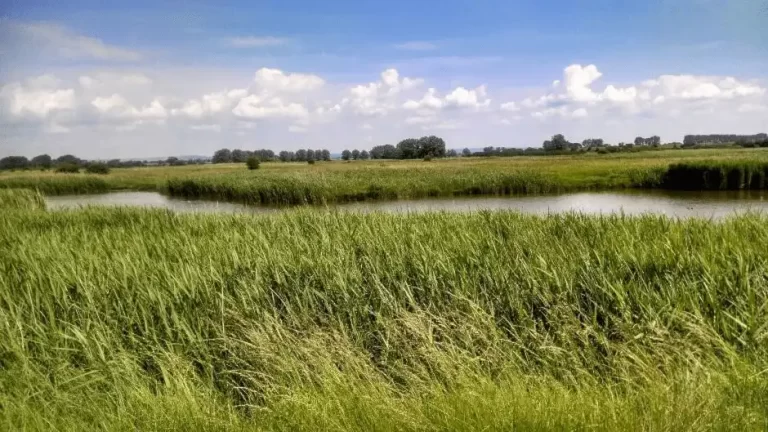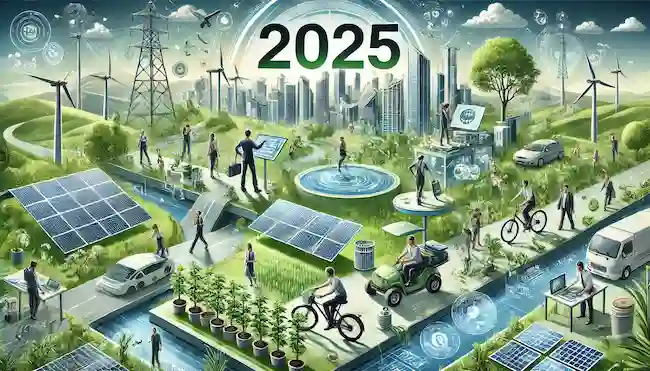Rewilding Explained: Benefits, Challenges, and Examples
Rewilding is a rapidly growing approach to our environmental management. It will play a key role in a sustainable future, both for us and for the natural world.
Here we’ll delve into what Rewilding actually is, the benefits and challenges of this concept, as well as cover key examples of rewilding in action. We’ll also cover two key developments for the future of Rewilding.
What is Rewilding?

Rewilding is an environmental conservation strategy, aimed at restoring and protecting nature.
The process involves supporting nature to re-establish the conditions that would exist had human impact not occurred.
It can also involve the reintroducing of native species, including apex predators and keystone species, to rebuild ecosystems and allow them to evolve naturally.
The ultimate goal is to re-establish self-sustaining environments, where nature can thrive without human intervention.
The Key Benefits of Rewilding

Pursuing Rewilding can deliver numerous benefits, many of which are not only beneficial to the natural environment, but also to human society.
1. Biodiversity Enhancement
Rewilding helps restore ecosystems to their natural state, boosting biodiversity.
By reintroducing key species, rewilding creates conditions where various species can flourish. For instance, the reintroduction of wolves in Yellowstone National Park has led to a trophic cascade, benefiting numerous species and restoring the park’s ecological balance.
2. Ecosystem Services
Healthy ecosystems provide essential services such as clean air and water, carbon sequestration, soil fertility, and pollination.
Rewilding promotes these services by enhancing the natural environment and its capacity for self regulation. For example, reforesting degraded areas are known to improve water quality and reduce soil erosion.
3. Climate Change Mitigation
Rewilding can contribute to limit climate change by enhancing absorption of carbon dioxide (CO2) from the atmosphere. A process know as carbon sequestration.
Forests, peatlands, and wetlands are all significant carbon sinks. Projects like the rewilding of the Scottish Highlands, which include restoring forests and peatlands, help capture and store carbon in natural growth. This is turn reduces greenhouse gas concentrations in the atmosphere.
4. Economic and Social Benefits
Rewilding can boost local economies through ecotourism. Natural parks and wildlife reserves attract tourists, generating income and creating jobs.
The Knepp Estate, located in England, rewilded to restore natural processes and native species. This in turn has become a popular ecotourism destination, providing economic benefits to the local community.
Challenges of Rewilding

1. Funding and Long-term Commitment
Rewilding projects require substantial financial investment and long-term commitment.
Securing continuous funding can be difficult, and projects may face setbacks if funding dries up. The Scottish Highlands rewilding initiatives for example have had to rely on diverse funding sources, including private donations, government grants, and ecotourism revenue.
2. Land Use and Ownership
Rewilding often requires large contiguous areas of land, which can be difficult to secure due to existing agricultural, industrial, or residential uses.
Negotiating land use changes can be complex and contentious. In the Netherlands, the Oostvaardersplassen project faced criticism for its land management practices and their impact on local wildlife.
3. Human-Wildlife Conflicts
In rewilding projects that seek reintroducing predators, conflicts with local communities, particularly farmers concerned about livestock predation, can occur.
Managing these conflicts requires careful planning and community engagement. In areas like the European Alps, the reintroduction of wolves has faced resistance due to concerns over livestock attacks.
4. Ecological Uncertainty
Predicting the outcomes of rewilding projects can be challenging due to the complexity of ecosystems.
There is often uncertainty about how species will interact in restored environments. Many rewilding cases are therefore somewhat trial and error, carried out over various stages, to find a balanced pathway to restoration.
Examples of Rewilding Projects

1. Yellowstone National Park (USA)
One of the most famous rewilding cases, the Yellowstone project reintroduced wolves in 1995 to restore the ecological balance.
The reintroduced wolves controlled elk populations. This in turn allowed vegetation to recover, which then benefited other species like beavers and birds.
2. Knepp Estate (England)
The Knepp Estate, located in Southern England, transitioned from conventional farming to a rewilding project, allowing natural processes to shape the land.
The project has seen the return of species like nightingales, purple emperor butterflies and beavers. Its success has seen the project become a model for lowland rewilding and fuelled further growth in rewilding awareness.
3. Oostvaardersplassen (Netherlands)
Created in a reclaimed polder, this project aimed to develop a self-regulating ecosystem with large herbivores like red deer and konik horses.
While it has faced challenges, Oostvaardersplassen remains an important experiment in large-scale rewilding and has supplied key insights to support the success of future rewilding projects.
4. Scottish Highlands (Scotland)
Rewilding of the Scottish Highlands includes multiple initiatives, including the reintroduction of red kites and plans for restoring the Caledonian Forest.
These projects also focus on community involvement and sustainable economic development through ecotourism, giving it a wide ranging sustainability gain.
Future of Rewilding

Urban Rewilding
Urban rewilding takes the concept into towns and cities, and is gaining momentum as cities worldwide recognise the benefits of reintroducing nature into urban environments.
In the urban setting, rewilding aims to benefit both ecological balance and the well-being of residents. This contrasts with traditional urban landscaping, which often involves high maintenance and the use of non-native species.
Some of the key benefits achievable for residents includes improved air quality, boosted climate resilience and mental health benefits. For more in-depth insight into Urban Rewilding check out our recent post on the topic.
Combined Rewilding with Carbon Offsetting
Alongside the emergence of rewilding, the growth of carbon offsetting and the carbon credits market is progressing rapidly.
Carbon offsetting is the process of carrying out projects that reduce or remove and equivalent about of carbon emissions elsewhere. This in turn allows businesses, governments or individuals to compensate for their own carbon footprint and achieve a Carbon Neutral or Net Zero status. Such projects can be conducted directly by a business for their use, or marketed for sale as carbon credits.
Rewilding projects predominantly contribute to increased natural growth, which often will increase the rate of carbon sequestration from the land, removing carbon dioxide from the atmosphere.
This therefore presents the potential opportunity for future rewilding projects to target carbon offsetting at an early project stage, using this aspect to enhance the financial value of rewilding and ultimately rewilding success.
Rewilding: Sensible For Sustainability & Nature

Rewilding offers a transformative approach to conservation, providing substantial ecological, economic, and social benefits.
Ongoing growth of the rewilding movement does though faces significant challenges, including human-wildlife conflicts, land use issues, ecological uncertainties, and funding constraints.
Successful rewilding projects, such as those in Yellowstone and the Scottish Highlands, illustrate the potential of this approach to restore natural processes and create resilient ecosystems.
As our understanding of ecological dynamics grows rewilding can play a critical role in restoring nature and its balance with human society. As it does, it will move into the urban space and has the opportunity to play a role in another human-nature challenge, climate change, through contributing to carbon offsetting.
If you’d like to learn more about some of the topics we’ve covered here, then check out the below posts:
What is Urban Rewilding: Overview and Examples
Offsetting Made Simple: An Overview
Plastics in Nature: Actions to Help Protect Wildlife
Plus, if rewilding sounds like something you’d like to get involved with day-to-day, we also offer Key Tips to Build a Career in Rewilding.
Finally, what do you think about Rewilding and its future role? Let us know in the comments section below. It would be great to hear from you!





